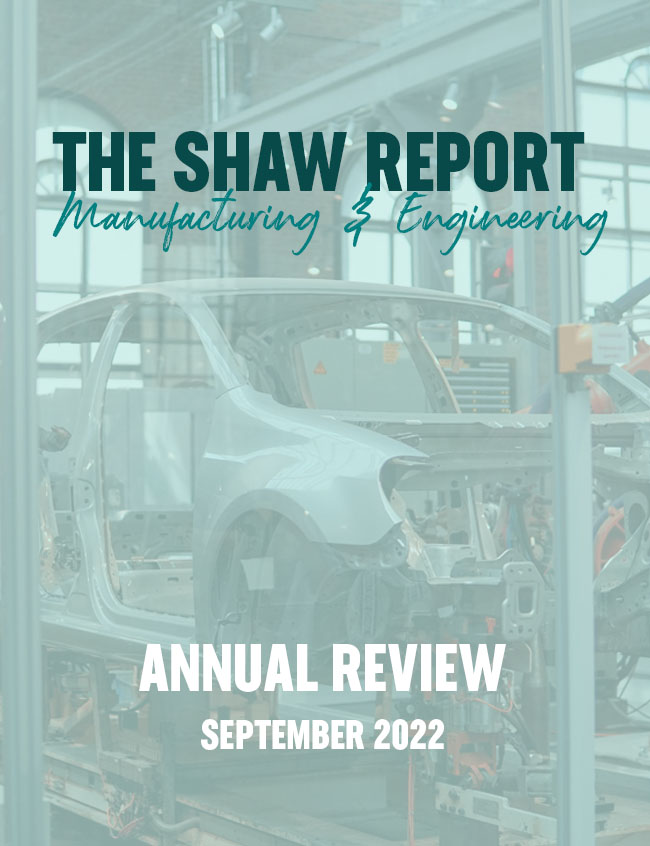Expert opinion
Hitting The Sweet Spot: The Four Main Funding Opportunities For Scaleups
Myles Hamilton is a Director in Shaw & Co's M&A team. In this article he discusses how scale-ups need to hit a 'sweet spot' to gain the right funding.


While start-ups typically rely on investment from friends and family, once it’s time to scale up they need to look further afield. The good news is that there has probably never been a higher volume or variety of funding available. The bad news is that, partly because of all this activity, the market can seem opaque and complex, with different categories of investors all having different requirements. That means we can offer valuable support: helping you find the right investor and helping funders identify the best propositions. Then, once that initial ‘matchmaking’ process is complete, we can help get the deal done.
What are investors looking for?
Tech start-ups remain popular, but it’s not all about digital. We work with young companies with great growth potential across all sectors, including food & drink and retail. What's more, Bristol and West Country scale-ups are firmly on the radar as funders extend their reach beyond London to find the right opportunities.
Traction
Typically, at this early stage of their growth story, our clients will have traction in terms of revenue and customer/user numbers, but not yet much to show in terms of profit. That means that securing debt can be challenging, so equity funding is often the only option. Fortunately, it’s a very live option that can be broken down into four main areas.
But before categorising those different funding avenues, let’s briefly look at what makes a potential scaleup investable. We use a unique gate process to determine if early-stage businesses are ready to attract, and successfully deploy, additional investment. Market trends can also play a key role. For example, AI and Blockchain startups are currently high on the wish list for funders. But there are always two enduring factors: people and plan. As well as evidence of historic and current performance, investors want to see a solid plan laying out how further investment will translate into growth within a specific timeframe – and they want to be convinced by the people behind it. Getting the right advice about how to design and present that plan is crucial.
The breadth and depth of funding
Back to our investor categories, where the breadth, depth and variety in the market mean that, if you know where to look, there are always opportunities for the right business.
1) Angel Investor Groups
While individual angel investors can be invaluable to fledgling companies, when it comes to funding scale-ups, working with established groups of angel investors yields better results thanks to the increased fire power these groups offer. These tend to align themselves according to geography and sector. For example, some groups may only invest in Bristol, and others that focus on a specific sector such as life sciences.
They will 'write cheques' from £500k to as high as £5m, while maximising tax relief through the Enterprise Investment Scheme (EIS) a priority. As one would expect of angels, they are likely to be comparatively hands-on after investing. The expertise within these groups and the willingness of angels to take risk means that they may provide the best funding opportunity for certain companies.
2) EIS Funds
These funds typically offer high net worth individuals and the wider public the opportunity to invest in a portfolio of actively-managed high-growth companies, taking advantage of EIS tax benefits. What that means for our scaleups is that these players are constantly on the lookout for opportunities to invest between £2m and £3m for between 20% and 30% of equity. Typically arranged around geography or sector, some of these funds have a local representative. Our role is to work with them to understand what they are looking for and put suitable, well prepared clients in front of them.
3) Venture Capital Trusts (VCTs)
This is perhaps the most exciting opportunity for scaleups. VCTs are publicly quoted vehicles that offer their shareholders valuable tax relief. In return, the government sets strict limits on where VCTs can invest their money, currently favouring knowledge intensive companies (KICs). The authorities also restrict how long cash can sit within funds before being deployed, so the clock is always ticking for VCTs to find suitable investments.
This has created a sweet spot for scaleups, but there are catches. VCTs focus on preserving their shareholders’ capital, preferring relatively modest returns to risking all on ‘the next Facebook’. That means they will need to see a smoothly functioning business with a solid growth plan. They also tend to work through intermediates such as Shaw & Co, preferring to view ‘pre-qualified’ opportunities.
Typically, VCTs are looking for companies with £1m turnover (usually pre-profit), and to invest upwards of £2m for 20% to 30% of equity and a seat at the table. It is a growing opportunity: VCTs’ combined new funding totalled around £500m in 2016/17, and over £750m in 2017/18 but may break through the £1bn barrier this year which is a lot of money to invest! Many of the major players are active in the region and have built relationships with Shaw & Co.
4) Private Equity Funds
Outside of the tax driven funds, there are a number of Private Equity funds (or LPs as they are sometimes called) that have much greater flexibility in their investment criteria. As such, it is almost impossible to categorise or describe their requirements other than on a case-by-case basis. These include many of the ‘household’ names that back the mega deals we all read about in the papers. But there are also numerous funds at every level of the investment spectrum – from macro to massive when it comes to cheque size. Some have been established with a focus driven largely by the experience of their backers whilst others take a more case by case approach. We have over 600 funds on our active data base and by far the largest by number fall into this category. We keep detailed records of investment criteria to best match opportunity and funder.
Getting the deal done
Selecting the right investor audience is only half the job. Investors can see literally thousands of opportunities per year and will only invest in a handful. Making it through the full process takes a lot of preparation and skilful delivery. An investor charged with looking after someone else’s money is often looking for a reason not to invest, more than reasons to invest. Each of the key pillars of market, proposition, plan, team and traction have to stand up to interrogation and highly experienced critique. Due diligence covering financial, legal and commercial aspects all need to come back clear and at each stage, the opportunity for the investor to ‘fall out of love’ with the business has to be headed off at the pass. A slick and well-run process is essential to avoid each of these potential bear traps.
Making your move
So, how do you know which of the above is the right funding option for you and your business? And then, how do you present your case effectively to win their backing? The reality is that along with opportunities there is also complexity, so get in touch with us to talk through the best route for your business.
We work with growing UK SMEs and small-cap PLCs that have funding needs in excess of £2m and regularly approaching £100m. Our clients’ needs will typically be for sophisticated finance products such as cash flow based lending or private equity investments. Our value lies in helping clients access funding that relies on confidence in future trading and cash flows. For a confidential, independent, no obligation discussion on the funding options available click the 'Let's chat' button.
INDUSTRY Content

The Shaw Report: Banking, Financial & Insurance Services - Annual Report #2
Shaw Report
|
February 28, 2023

The Shaw Report - Healthcare & Life Sciences Annual Review December 2022
Shaw Report
|
December 14, 2022

The Shaw Report - Wholesale & Retail Trade Industry Interim Review December 2022
Shaw Report
|
December 14, 2022

The Shaw Report - Leisure, Tourism and Sport Annual Review November 2022
Shaw Report
|
November 29, 2022

The Shaw Report - Property & Construction Industry Interim Review November 2022
Shaw Report
|
November 23, 2022

The Shaw Report - Technology Media & Telecoms Industry Annual Review October 2022
Shaw Report
|
October 19, 2022

The Shaw Report - Automotive, Transport & Logistics Industry Annual Review October 2022
Shaw Report
|
October 12, 2022

The Shaw Report - Professional Services Industry Interim Review September 2022
Shaw Report
|
September 26, 2022

The Shaw Report - Manufacturing & Engineering Industry Annual Review September 2022
Shaw Report
|
September 1, 2022

The Shaw Report - Banking, Financial and Insurance Services Industry Interim Review August 2022
Shaw Report
|
August 23, 2022
Subscribe for updates


Subscribe to receive news updates, Connected Magazine, details of forthcoming events, opinion and industry topics that matter to you, and more.



































